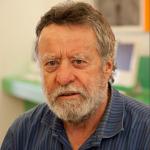Today’s “New Keynesian” orthodoxy says that short- to medium-run performance is determined by interest-sensitive “loanable funds.” Unimpeded interest rate adjustment should support robust macroeconomic equilibrium. Examples include the (visibly non-existing) “zero lower bound” on rates that allegedly holds down saving and contributes to secular stagnation, the global “savings glut” keeping market rates near zero, and the “dynamic stochastic general equilibrium” (DSGE) models beloved by freshwater economists and central banks in which investment is determined by saving as a function of financial return.
Loanable funds doctrine dates back to the early nineteenth century and was forcefully restated by the Swedish economist Knut Wicksell around the turn of the twentieth (with implications for inflation not pursued here). It was repudiated in 1936 by John Maynard Keynes in his General Theory. Before that he was merely a leading post-Wicksellian rather than the greatest economist of his and later times.
Macroeconomic models are built around assumptions about behavior imposed upon accounting relationships such as value of output (or demand) = cost of output (which generates income) and value of assets in a balance sheet = value of liabilities + net worth. Keynes said that changes in income dominate in making sure that the first accounting balance is satisfied. He switched Wicksell’s assumptions about macro causality – or, in the jargon, the “closure” of the model – to fit his understanding of the system. New Keynesian economists reswitch the closure back to Wicksell.
Institutions have evolved since Wicksell and Keynes were writing – the welfare state materialized and international trade expanded. Both thought, correctly for their times, that most saving comes from households and most investment is done by business. Unlike Keynes, Wicksell argued that “the” interest rate as opposed to the level of output adjusts to assure macro balance. If potential investment falls short of saving, then the rate will, maybe with some help from inflation and the central bank, decrease. Households will save less (and possibly also run up debt to buy into a financial bubble as prior to 2007) and firms seek to invest more. The supply of loanable funds will go down and demand up, until the two flows equalize with the interest rate at its “natural” level.
In New Keynesian thinking, demand for investment can be so weak and the desire to save so strong that the natural rate lies below zero. The “distortion” imposed by the zero lower bound short-circuits the adjustment process, leading to calls for central banks to raise their inflation targets to reduce the “real” interest rate (nominal rate minus inflation). More straightforward interventions such as restoring American labor’s bargaining power so that rising wages can push up prices from the side of costs, expansionary fiscal policy, or redistributing from the top one percent to households in the bottom half of the income size distribution whose saving rates are negative are apparently impossible for “political” reasons.


